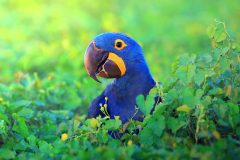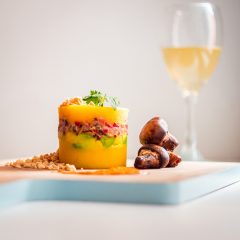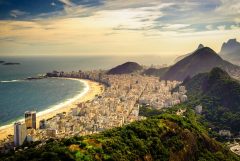The city with a smile on its face

Strange, isn’t it, how peering through rose-tinted holiday goggles can make some real horrors seem oddly endearing? I'm certain that Brazil's slavery period was every bit as brutal as the history books suggest, but a fortnight in Bahia left me with the uneasy impression that everybody had rather enjoyed themselves.
Salvador was, said our guide Lenauro, built by seventeenth-century slaves. The city ought to have been unhappy but it wasn’t. It was flushed with colour and rolled around over several hills in a state of perpetual festivity. This was baroque with a drumbeat. Although it was three weeks deathly sailing from Africa, it was once the greatest and richest African city on earth.
Not that that meant much to the slaves. In a city centred on Pelourinho (The Pillory), personal enrichment was a low priority. The flogging posts have gone now and Pelourinho whips up nothing more gruesome than a cappuccino. It was all agonisingly pretty - cobbles, pastels, roasted spice, belfries, vendors in billowing gowns of whalebone and lace and the Baianas, trying hard to walk when you knew they’d rather be dancing. In one corner, a bare-fisted fighter was artfully beating up the air in front of his opponent, never touching. "We’re The Already Dead", they said cheerfully and resumed their airy punch-up.
Capoeira fighting was not all that had survived the voyage from Africa. The slaves brought wild recipes that have translated into prawn patties and fish curries. There was so much Nigerian music that Salvador University had had to create a professorial chair to make sense of it all. Most intriguing was the religion; animism simply grafted itself onto Catholicism, wherever there was space. At the little chapel on the quay, the Virgin Mary had sprouted a fish-tail. "Fishermen come here to pray", said Lenauro "for fish and more babies." The slaves had, in 1703, completed what must be the most exotic church in the world, the Franciscan basilica. What they lacked in liberty, they made up for in free-style. The pulpit is supported by naked, pink ladies - each exorbitantly pregnant. Christ, meanwhile, is shown dangling from the cross by one arm, chatting with his free hand. Even in suffering, Salvador was exuberant.
One day - too soon - Lenauro bundled us into his car and away, out through the sugar estates of the Recôncavo. Three hours later, the car began to climb into mountains, the Chapada Diamantina. There, tucked among great, orange-grey parabolas of rock, we came upon tiny Lençóis. "You could once find diamonds just lying in the street," said Lenauro.
It was careless remarks like that which, in 1844, sparked a stampede. Thousands of people rushed up to Lençóis with shovels. The rich built miniature Venetian palaces and the French even set up a consulate. Slaves were marched in from the coast and the mountainside was literally scrubbed of soil. By 1870, it was - for most - all over.
Others, it seemed, had stayed on. The palaces were still lavished in jaunty pinks and limes. The boomtown boys still washed their ponies at the village pump and waitresses had kept their slave-girl bonnets.
Lençóis was determinedly, splendidly raffish. There were even a few garimpeiros, descended from slaves, still scratching around for diamonds.
We met one of them on a beautiful mountain walk. Chica, who looked about ninety, worshipped four hundred Jare gods and lived in a cave. Her home was a cathedral of pink rocks, 1.7 billion years old, below a fantastic escalator of water called Cachoeira do Sossego. We found her washing her coat in the torrents.
"She’s a very good miner," said Lenauro "and on week-ends, she’s a professional drinker."
We spent the last few days of our Brazilian adventures at Praia do Forte. Every year, 22,000 hatchlings begin their own little turtle adventures from this beach. Our eco-hotel had tip-toed in between this gorgeous swoop of sand and an Atlantic forest inhabited by sloths and marmosets. Nature and the nurtured seemed to rub along well.
There was only one lot of trouble-makers - the anacondas - who, every now and then, slithered out of the swamp and ate the eco-guide’s ducklings. She, like generations of Brazilians before her, regarded such outrages with surprising equanimity.
Tailor-made holidays
Flexible, custom-made holidays to Latin America created to match your exact requirements: our tailor-made itineraries are as unique as the clients for whom they are designed.
Design my tripPapagaio
Your edit for Latin American inspiration
Our exciting range of articles on Latin America explore everything from iconic destinations and lesser-known cultural gems to delicious traditional recipes. You’ll also find exclusive travel tips, first-hand client reviews and the chance to get your personal questions answered by our travel experts.
View Extraordinary Inspiration






































